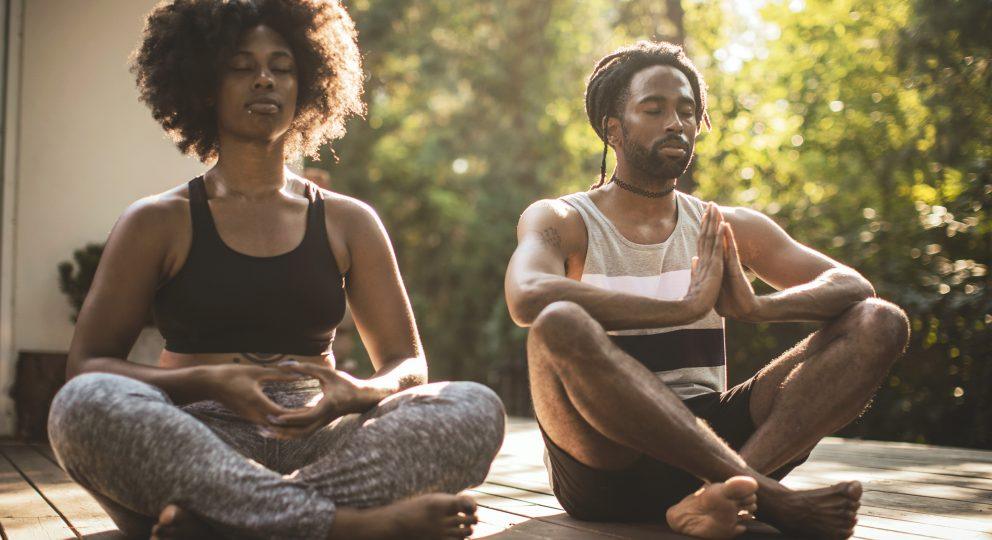To be intimate with someone is to allow ourselves to be seen and to see openly in return. At the heart of human relational desires, you long to be seen as the complex and authentic beings that you are. Yet, despite longing for intimacy, not everyone knows how to go about achieving it. How do you create space in your relationship to show up as you are and to invite your partner to do the same?
While intimacy is not restricted to romantic relationships, these types of partnerships offer a container for mutual exploration of inner depths. When you are in a romantic partnership built on a foundation of mutual respect and trust, you have the necessary foundation to open up in deeper ways. This is what intimacy is about. It is a practice of peeling away external layers of who you are to get to the heart of what you think, feel, and experience.
Enhancing intimacy in romantic relationships can include sexual connection. However, without emotional or spiritual intimacy, the sense of togetherness will be incomplete. Establishing emotional or spiritual intimacy is the place to begin growing closer. You can explore this through mindfulness.
In fact, intimacy is not possible without mindfulness, which is the practice of paying open, non-judgmental attention to your experience. It enables you to offer your partner increased presence, patience, compassion, and acceptance. These qualities are vital for you to feel safe sharing more of who you are with your partner.
To practice mindfulness in relationships, you do not necessarily need special practices. Listening with an open, curious heart. Mind your assumptions. Ease your habitual reactions. These can happen in any ordinary moment. However, mindfulness is a skill that can be developed through intentional exercises. These are just some of the exercises you might explore to enhance mindful awareness and intimacy in your relationship.
Intentional sharing
You might talk to your partner numerous times throughout the day, but how often are you mindfully sharing and listening with full presence? Make time routinely for intentional sharing. To explore this practice:
- Find a comfortable and private space to sit with your partner. Set all distractions aside and choose who will speak first.
- Once decided, allow the speaker to share openly and freely about anything they are experiencing. The listener should practice fully attentive listening, easing any tendency to fix or respond.
- Once the speaker finishes, the listener can ask follow-up questions or share any loving, supportive words. Again, the intention is not to fix or to problem solve. It is simply to let your partner know that you are fully open to learning about their experience.
- Swap roles. The listener becomes the speaker and the speaker becomes the listener. Allow this practice to take as long as it requires.
Loving-kindness meditation
To enhance your capacity for compassion, draw to mind the following people one at a time: yourself, someone you love, an acquaintance, someone you have difficulties with, and the collective at large. With each one of these images in mind, silently repeat the following affirmations:
May you be loved.
May you be safe.
May you be happy.
May you be at peace.
This practice can increase empathy and compassion and reduce personal bias. This supports greater intimacy in relationships.
Shared meditation practice
Have you ever sat in meditation with your partner? Research suggests that meditating in tandem with another can increase feelings of closeness and a willingness to disclose intimate details over time. Meditation helps to clear away the clutter of everyday life while increasing your awareness of your innermost experience. This can help shift the way you relate to your partner: the things you share, the way you share them, and the way you listen in return.
To try this, sit face-to-face and set a timer. Close your eyes and meditate in silence or by using any guided practices that feel supportive for your both. After the timer goes off, take turns sharing how the meditation felt for you.
You might also get creative with this. For instance, you might try short mindfulness practices while holding one another’s hands. Or, you might try syncing your breath for a short period of timing. You can also pair your inhalation with their exhalation and vice versa.
The ‘Just Like Me’ meditation
One final practice that can enhance your sense of universal connectedness (and therefore intimacy) is the “Just Like Me” meditation. You can practice this while sitting across from your partner or alone. Tune in to the fact that despite your differences, your partner is, at their core, not so unlike yourself. Then, silently repeat affirmations such as:
This person has feelings and emotions, just like me.
This person has experienced physical and emotional pain in their lifetime, just like me.
This person has felt unworthy and insecure at times, just like me.
This person is learning about life, just like me.
Intimacy is not something freely given. It requires your attention, willingness, and intentional effort. To be truly intimate means to be present for all the shades of life: the light, the shadow, and the in-between. Through mindfulness, you enhance your capacity to show up, to get close, and to tune in to the transpersonal. It fuels the love in our human connections.
If you are not sure where to start improving your relationship and are looking for a personalized plan based off your unique needs, the Gottman Relationship Adviser is for you. This world’s first proven solution to relationship wellness takes the guesswork out of a great relationship. Measure your relationship health with a research-based self-assessment, then receive a tailored digital plan proven to heal and strengthen your connection.
How can you know you’re in a happy relationship that’s both good for your health and everyone around you? Can such a thing be measured? It can! Take this free quiz and find out how well you know your partner.











